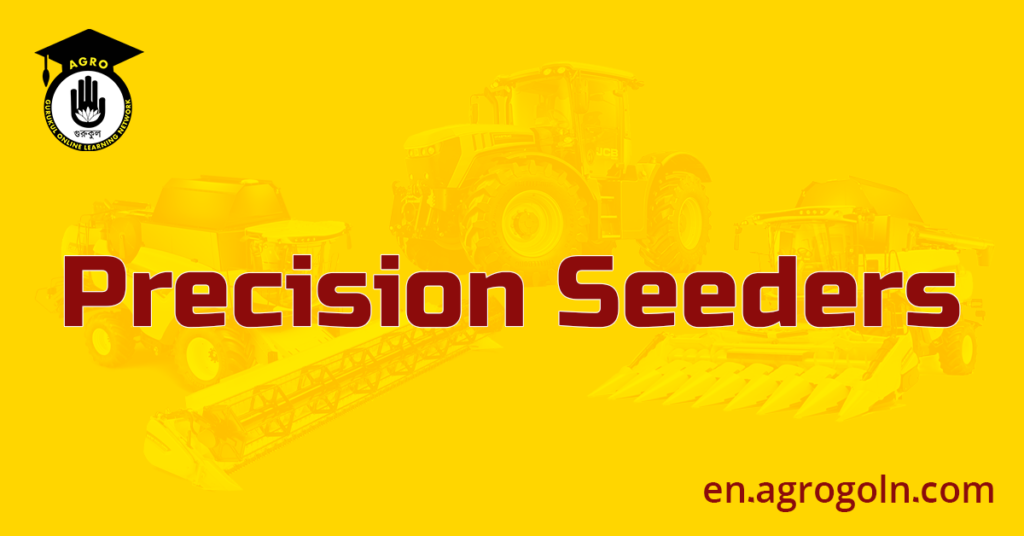Precision Seeders: Advancing Planting and Seeding Technology.Planting and seeding are critical steps in modern agriculture, determining the success of crop production. As the demand for food grows with an expanding global population, the need for efficient and precise planting methods becomes more pronounced. In response to this challenge, precision seeders have emerged as a game-changing technology, revolutionizing the way farmers sow seeds and nurture crops. In this article, we will delve into the world of precision seeders, exploring their benefits, working mechanisms, and the impact they have on agricultural practices.
Precision Seeders: Advancing Planting and Seeding Technology
1. Understanding Precision Seeders
Precision seeders are agricultural machines designed to precisely place seeds at predetermined intervals and depths in the soil. Unlike conventional seeders, which scatter seeds indiscriminately, precision seeders ensure optimal spacing and depth, leading to improved seed germination rates, uniform crop emergence, and ultimately higher yields. These seeders have gained popularity for their ability to optimize resource utilization, minimize wastage, and enhance overall farm productivity.
2. Benefits of Precision Seeders
Precision seeders offer numerous advantages, making them a valuable investment for modern farmers:
a) Enhanced Seed Placement: Precision seeders use advanced mechanisms to place seeds accurately at consistent depths. This ensures that seeds are not buried too deep or left too close to the surface, providing the ideal environment for germination and root development.
b) Reduced Seed Waste: Traditional broadcast seeding methods often result in overuse of seeds, leading to waste and increased costs. Precision seeders reduce seed wastage, as they distribute seeds more efficiently and uniformly across the field.
c) Increased Yield Potential: The precise seed placement provided by these machines promotes uniform crop emergence and reduces competition among plants. This can lead to higher crop yields and improved crop quality.
d) Optimized Resource Use: By using seeds more efficiently, precision seeders help farmers optimize other resources, such as water, fertilizers, and pesticides. This contributes to more sustainable farming practices and reduces environmental impacts.
e) Time and Labor Savings: Precision seeders automate the seed placement process, reducing the need for manual labor and saving time during planting. This allows farmers to cover larger areas in less time, enhancing overall operational efficiency.
f) Variable Rate Technology (VRT): Some precision seeders are equipped with VRT capabilities, enabling farmers to adjust seeding rates based on soil type, topography, and historical yield data. VRT optimizes seed distribution, further improving crop yield potential.
3. Working Mechanism of Precision Seeders
Precision seeders incorporate advanced technology to achieve accurate seed placement. The key components of these machines include:
a) Seed Metering System: The seed metering system measures and controls the flow of seeds to ensure consistent distribution. Various mechanisms, such as fluted rollers, vacuum systems, and air pressure, are used to regulate seed flow based on seed size and type.
b) Seed Delivery System: The seed delivery system transports seeds from the seed hoppers to the seed metering system, where they are precisely measured and distributed.
c) Seed Placement Mechanism: The seed placement mechanism ensures that seeds are placed at the desired depth and spacing in the soil. This is achieved through various mechanisms, such as seed tubes, discs, or pneumatic delivery systems.
d) Control System: The control system of precision seeders is often integrated with GPS and computerized technologies, allowing farmers to program specific planting patterns and adjust seeding rates as needed.
4. Types of Precision Seeders
Several types of precision’ seeders are available to cater to different crops and farm sizes:
a) Air Seeders: Air seeders use air pressure to distribute seeds evenly through tubes, providing precise seed placement. They are commonly used for large-scale farming and can cover vast areas efficiently.
b) Vacuum Seeders: Vacuum seeders use a vacuum system to pick up and place seeds at precise intervals. They are suitable for smaller farms and specialty crops.
c) Mechanical Seeders: Mechanical seeders employ fluted rollers or other mechanical mechanisms to measure and distribute seeds accurately. They are widely used for row-crop planting.
d) Pneumatic Seeders: Pneumatic seeders use a combination of air pressure and vacuum systems to deliver seeds precisely. They are often used for crops that require precise spacing, such as vegetables and sugar beets.
5. Considerations for Using Precision Seeders
While precision ‘seeders offer numerous benefits, their successful use requires careful planning and consideration:
a) Soil Preparation: Proper soil preparation, including leveling and uniform soil moisture, is essential to ensure optimal seed placement and germination.
b) Seed Selection: The selection of high-quality seeds that are suitable for the specific crop and environmental conditions is crucial for successful precision planting.
c) Calibration: Regular calibration of the precision seeder is necessary to ensure accurate seed placement and prevent seed waste.
d) Maintenance: Proper maintenance of the precision seeder, including cleaning and lubrication, is essential to ensure its smooth functioning and longevity.
e) Integration with Other Technologies: Precision’ seeders are often used in conjunction with other precision farming technologies, such as GPS and yield monitoring systems, to optimize overall farm performance.
6. Future of Precision Seeders
As agricultural technology continues to advance, precision’ seeders are expected to become more sophisticated and versatile. Integration with artificial intelligence, data analytics, and robotics may lead to autonomous precision’ seeders that can optimize planting patterns, adjust seeding rates in real-time, and respond to changing environmental conditions.
Moreover, advancements in seed genetics and plant breeding may drive the development of precision ‘seeders tailored to specific crop varieties, further enhancing crop yield potential and agricultural sustainability.
Conclusion
Precision seeders have emerged as a transformative technology in the realm of planting and seeding equipment. Their ability to optimize seed placement, reduce wastage, and enhance resource utilization has made them indispensable tools for modern f’armers. As agriculture faces the challenges of feeding a growing population and mitigating environmental impacts, precision ‘seeders will play a vital role in achieving sustainable and productive farming practices. As technology continues to evolve, the future of precision’ seeders promises even more exciting innovations, revolutionizing the way we sow the seeds of tomorrow’s harvest.
See more:

